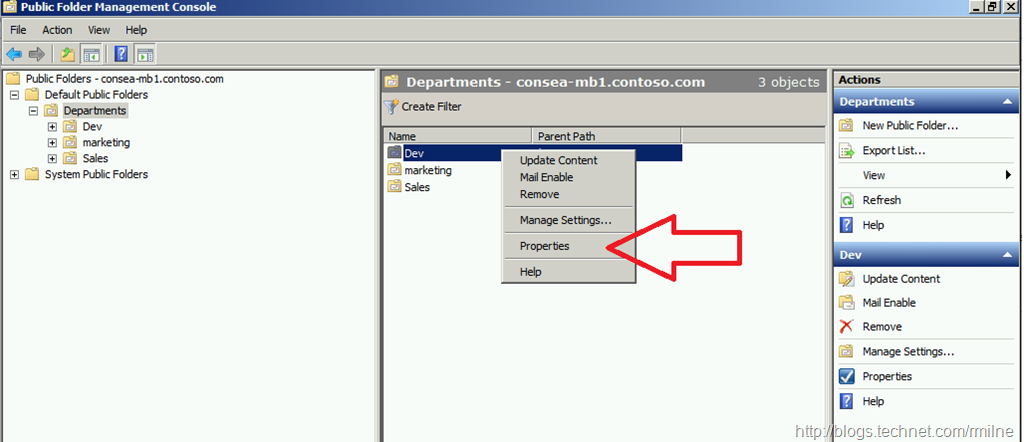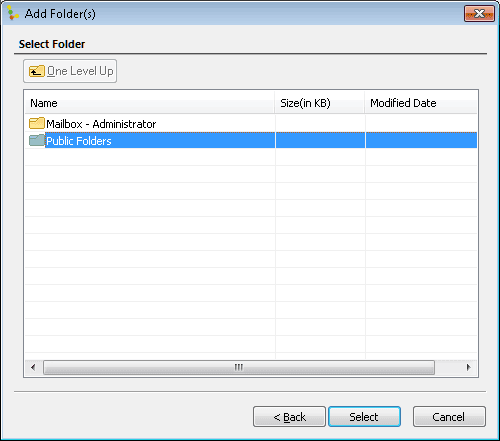


Use Outlook or OWA to open the Public Folder tree from a client machine. Procedure Verify what Public Folders are in use. This does not work in Exchange 2013 or later. Use this process if you wish to entirely remove the public folders from an Exchange 2007/2010 Organisation instead of performing a migration. I thought I'd share, just in case anyone else runs into the same frustration. Planning your migration at this phase involves mapping folders to public folder mailboxes. With the move to Office 365, Modern Public Folders are used, which means that special mailboxes hold the Public Folder structure and content. > Get-Recipient "marketing" | Get-Publicfolder | fl Name,ParentPath Legacy Public Folders have their own database within Exchange. If multiple public folders match your get-recipient results, then this pipeline will return the parent path for all of them. I have tested and this works whether the public folder is mail-enabled or not. Outlook 20 don't support Exchange Client Extensions and the PF folder admin options were supplied by the ECE. So you can retrieve the parent path of a public folder (such as "\Parent\Path\myPublicFolder") with the following command: > Get-Recipient myPublicFolder | Get-PublicFolder | Format-List ParentPath Public folder permissions are set on the server now - Exchange 2013 doesn't use the public folder data base, it uses mailboxes and calls them public folders. > Get-Recipient myPublicFolderĪnd get-publicfolder accepts pipeline input.

Is this something that could be done with a Google Apps scriptE.g.
#WHAT CAN EXCHANGE PUBLIC FOLDER DO FULL#
Once or twice I've just let it go and said "I can't do it without the full path".īut it turns out that get-recipient does not require the full path in order to return a result. I'd like to share a folder with someone outside of my domain and have a log of when they download any content from that folder. More often than not, I wind up harassing a user who connects to that folder in order to get the full path from them. So I assume this means that public folders will now be supported in future releases of exchange.I've run into this a number of times and it's been frustrating. High availability for the public folder mailboxes is provided by a database availability group (DAG)." This also means that there’s no longer a public folder database. Public folder architecture uses specially designed mailboxes to store both the public folder hierarchy and the content. Open the Properties for the Public Folder via Exchange System Manager, and select the Email Addresses tab. If the above doesn’t help, you may have to give Anonymous users rights to create items in the folder. The first is ensuring the Public Folder has a suitable email address the second is making sure that all the users are aware of when another user has read a message or replied to a messaging in the folder.
#WHAT CAN EXCHANGE PUBLIC FOLDER DO HOW TO#
"public folders were re-engineered using mailbox infrastructure to take advantage of the existing high availability and storage technologies of the mailbox database. Disable-MailPublicFolder -Identity Public folder name of GUID Enable-MailPublicFolder -Identity Public folder name of GUID To learn how to start a remote PowerShell session to Office 365 read this article. This information is from TechRepublic, however i have also found information on TechNet saying that public folders are not going away and another TechNet article about a change to public folders in exchange 2013 They even made public folders optional in exchange 2010 I believe. This information was given out when exchange 2007 and again when exchange 2010 was released. So I am now planning the migration for exchange and have come across some conflicting information regarding public folders.įrom what i can tell Microsoft was informing people that public folders will be going away in future releases of exchange.


 0 kommentar(er)
0 kommentar(er)
